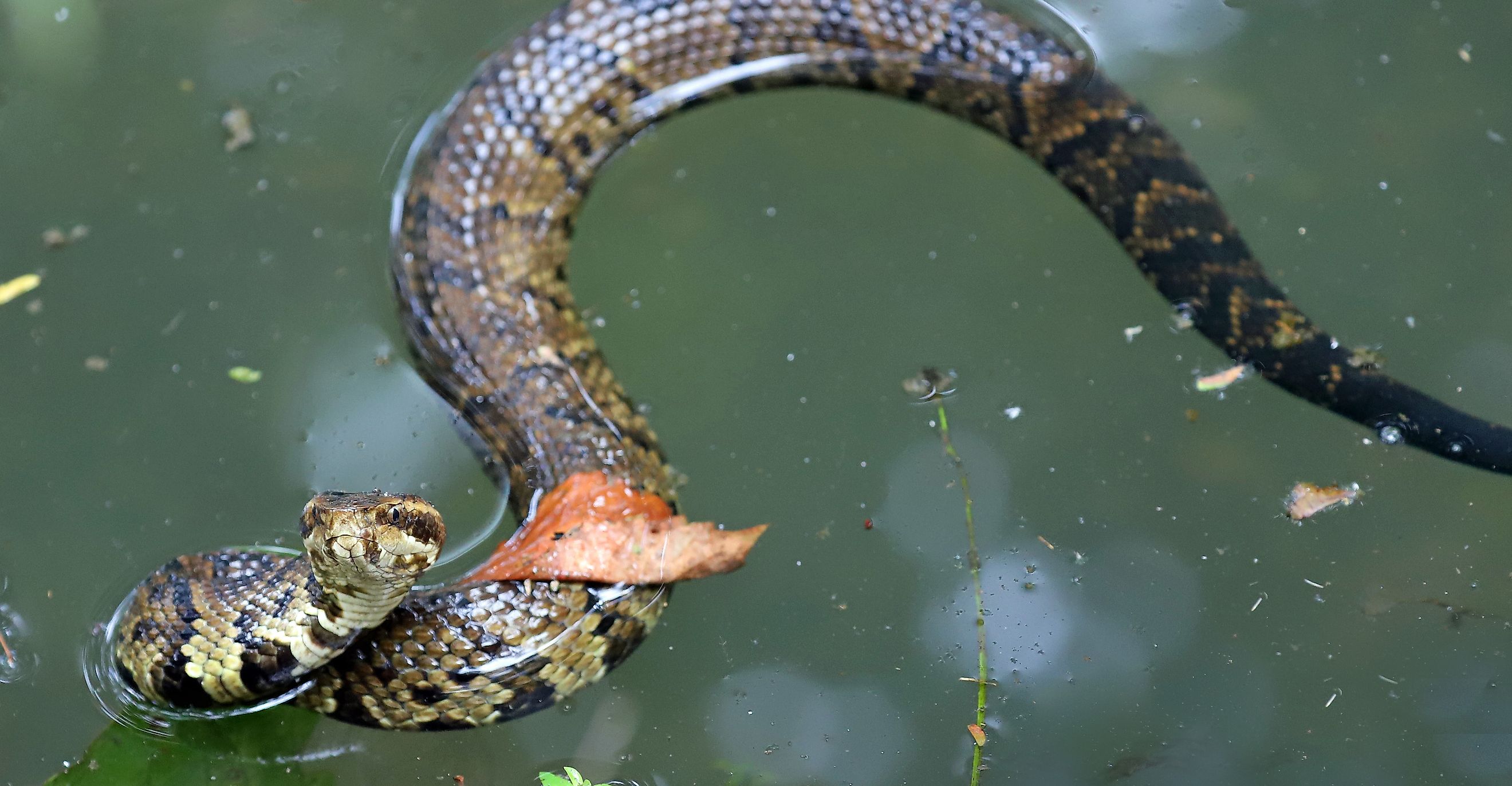
The Most Snake Infested Lakes in Mississippi
Mississippi is known for its famous river, but that's not its only body of water. The lakes of Mississippi are perfect for fishing, swimming, and boating. Whether you're planning to camp along the placid shores of a Mississippi lake or spend a fun day at the beach, it's essential to watch out for snakes. Mississippi has several kinds of venomous snakes that will ruin the fun of a day out and require immediate medical assistance. Be careful of these reptiles, especially when you're at the lake.
Horn Lake
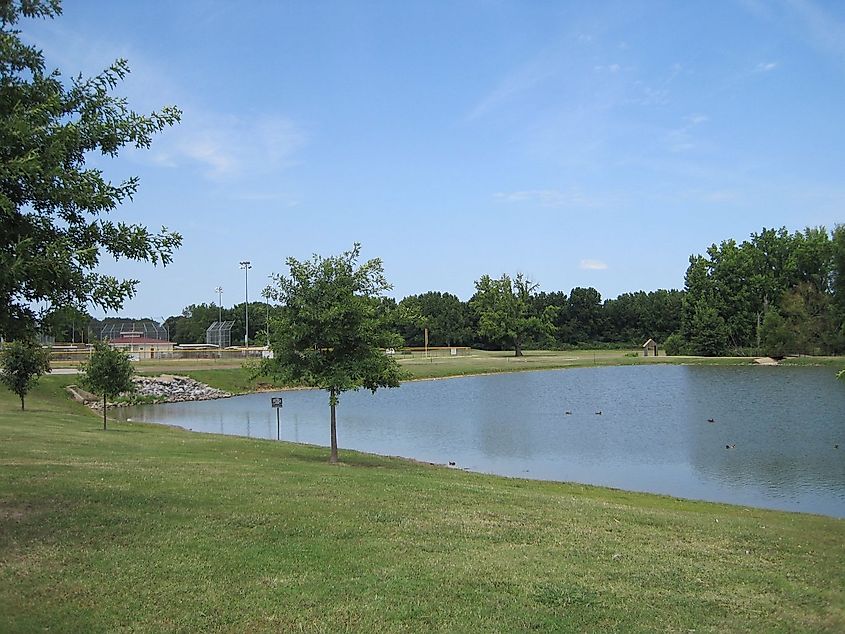
Horn Lake, Mississippi, is an oxbow lake formed by the meandering and cutoff of a former Mississippi River channel. Also known as Mud Lake by the locals, this candy cane-shaped lake used to be part of the Mississippi River. This lake is just south of the Tennessee state line, only 17 miles from the western side of Memphis and just 12 miles from the suburb of Southaven, Mississippi.
This town has multiple snake removal services, including Apex Wildlife Control. Venomous snakes have triangular heads with pointed snouts, and their eyes have slit pupils that resemble the pupils of a cat at rest. Non-venomous snakes have rounded heads with blunter snouts, and their pupils are usually round. The most common venomous snake in Mississippi is the cottonmouth, which is brown with darker brown bands and is usually found near water. Cottonmouths are named for the white inside of their mouths, which will often "gape" when they feel threatened.
Enid Lake
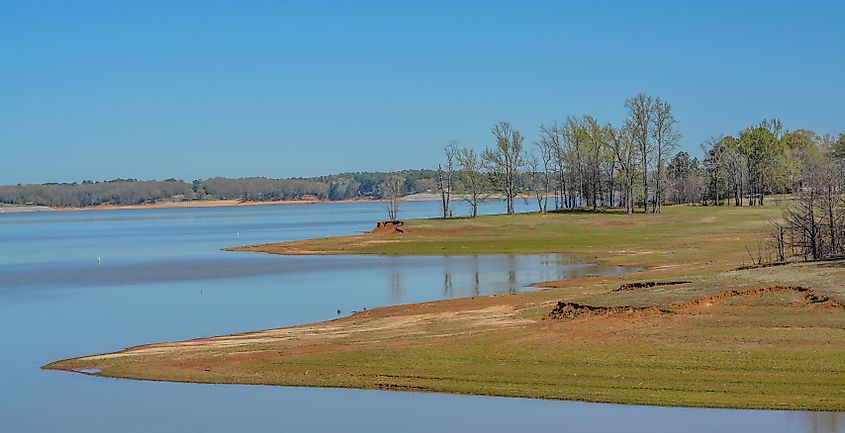
Enid Lake may be small, but it's home to some big snakes. These have been sighted in this lake over the years, some large enough to raise their heads over the sides of small boats potentially. While there are some species of venomous snakes that can swim, the large snakes sighted in Enid Lake are likely to have been the common watersnake, which may often be mistaken for the cottonmouth. Water snakes are usually yellow, with brown bands spaced widely apart on their bodies, although older serpents may darken to the point where they become completely black. They have white, yellow, or gray bellies with reddish or black crescents and can grow up to 4.5 feet long in the wild. These watersnakes are active both at day and during the night and prefer to hunt small fish, frogs, and bugs along the water's edge. You can often see them basking on lakeshores or the banks of streams, although they will slither into the water when disturbed. They are not venomous, although their bite can be painful.
Grenada Lake
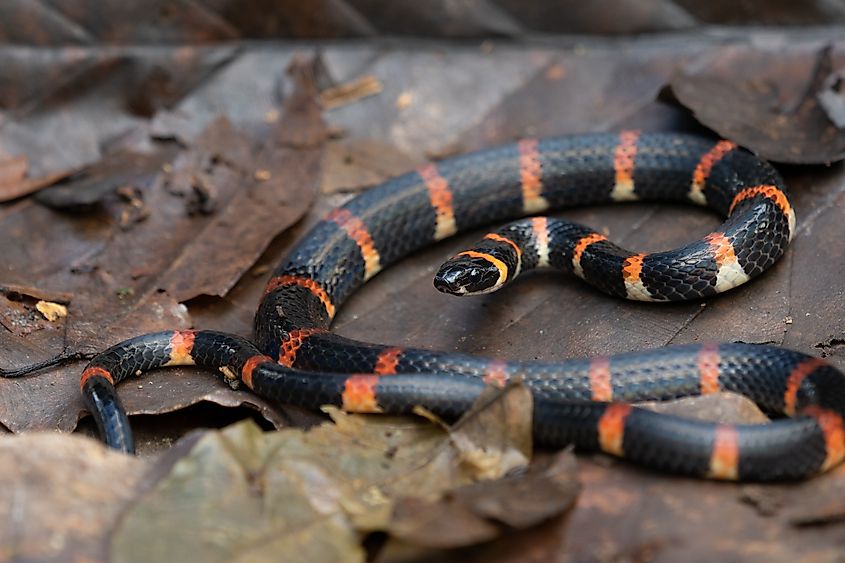
Grenada Lake is known for its wildlife. This 35,000-acre lake is managed by the Mississippi Department of Wildlife, Fisheries, and Parks to ensure that the animals living in and around the lake have a safe and balanced habitat. Consequently, Grenada Lake is one of the most thriving and active ecosystems in the entire state of Mississippi. It's an excellent place for fishing, with 1,200 felled cedar trees at the bottom of the lake providing great habitats for the local crappie. In fact, Grenada Lake is known as the number one crappie lake in the United States! Anglers are welcome, and the Thunder on Water Safe Boating Festival Children's Fishing Rodeo draws hundreds of young sportschildren each year.
Because of this thriving habitat, Grenada Lake is also home to many coral snakes. The ones you'll find in Mississippi are memorably colored, with alternating wide red and black bands separated by narrow yellow bands and a yellow band around the head. These spend most of their time hiding under the ground or leaves and will only come to the surface when it rains. While they're venomous, coral snakes are not aggressive and rarely bite--in fact, they're responsible for less than one percent of treated snake bites in the United States.
Sardis Lake
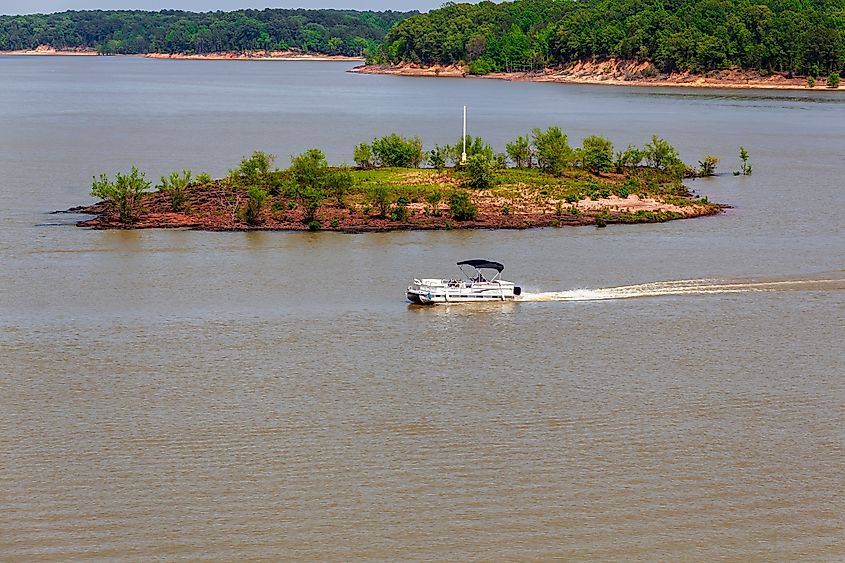
Sardis Lake is a reservoir on the Little Tallahatchie River, next to the Sardis Dam. It's popular with locals for its sandy beaches, as well as the excellent fishing opportunities, which offer plenty of bass, catfish, bluegill, sunfish, and crappie for catching. This lake is perfect for water sports, with the Sardis Lake Marina offering boats, tubes, skis, and wakeboards to rent. There are plenty of campsites for those staying overnight, and a swimming pool and recreation hall for rainy days.
However, Sardis Lake is in an area that's rife with rattlesnakes. These dangerous serpents are known for their rattle, which comes from a series of interlocking scales at the end of its tail, which the snake adds to whenever it molts. Rattlesnakes are venomous, but they can only strike from a coiled position, so if you're hiking around the lake or playing on the golf course, you should be on the lookout for these tan and brown-striped creatures.
Staying Safe Around Mississippi's Snakes
The lakes of Mississippi are beautiful, but the wildlife can be dangerous. However, snakes make up an essential part of the ecology and often eat rodents and other pests that can overrun an area without natural predation. Be careful when you're on a hike around the shores, woods, or marshes of a Mississippi lake, and take caution when turning over logs or reaching under rock formations. If a snake bites you, call 911 or seek emergency medical assistance immediately.











